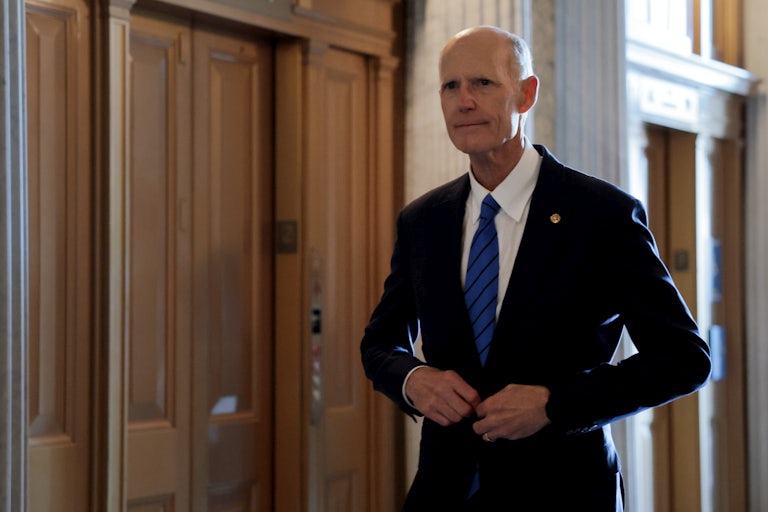Karoline Leavitt Hints Trump Could Start Hiding Even More Jobs Data
Donald Trump’s press secretary refused to give a straightforward answer to a key question about the monthly jobs reports.

The Trump administration appears to be inching away from the responsibility of issuing a monthly jobs report.
Speaking with reporters at a White House press briefing Tuesday, press secretary Karoline Leavitt failed to promise that the economic updates would continue, instead downgrading their existence to a “hope” while further undermining the credibility of the data the reports are built upon.
“Will the Bureau of Labor Statistics continue to put out monthly jobs reports?” asked a reporter.
“Well, look, what I’ll tell you about the Bureau of Labor Statistics—I believe that is the plan and that’s the hope, and that these monthly reports will be data that the American people can trust,” Leavitt said. “As you know, the Bureau of Labor Statistics has made massive revisions after the last several points reports that they have put out.
“And there has certainly been a decline in the quality and reliability of data coming from the Bureau of Labor Statistics, and there’s been an increase in revisions,” Leavitt continued. “And this president and the administration is finally tackling this problem that so many have talked about. The president is actually doing something about it.”
Donald Trump’s new nominee for BLS commissioner, E.J. Antoni, told Fox Business Tuesday that “BLS should suspend issuing the monthly job reports” and instead only rely on quarterly data. Prior to entering the fold of the Trump administration, Antoni worked as the Heritage Foundation’s chief economist and helped develop Project 2025.
Trump abruptly fired BLS’s last commissioner, Erika McEntarfer, hours after the release of the last jobs report, claiming that the Biden-era appointee’s work analyzing the granular data of America’s economy was “faked” and could not be trusted.
Revisions to the monthly jobs report are far from out of the ordinary. Instead, it’s fairly normal for the reports to tell a different picture month-to-month, as more data is collected over time from late-submitting survey participants. The report has been published on a monthly basis since 1916, but there hasn’t been an issue with it until Trump 2.0.
At the core of Trump’s gripe with the July report was its revision of figures from the preceding months, which moved the three-month growth average to 35,000. A lag like that hasn’t emerged since 2010, and it made Trump’s first six months in office—and his controversial tariff overhaul—look particularly bad. The report’s downsizing also suggested that while some sectors, such as health care and social assistance, gained jobs, the vast majority of the market lost employment.
The absence of a monthly report would be yet another infringement on transparency and accountability between the federal government and the people it’s supposed to represent.
“We need to look at the means and the methods of how the United States is acquiring this very important data,” Leavitt said Tuesday. “The goal, of course, is to provide honest and good data for the American people to make very important economic decisions on.”









